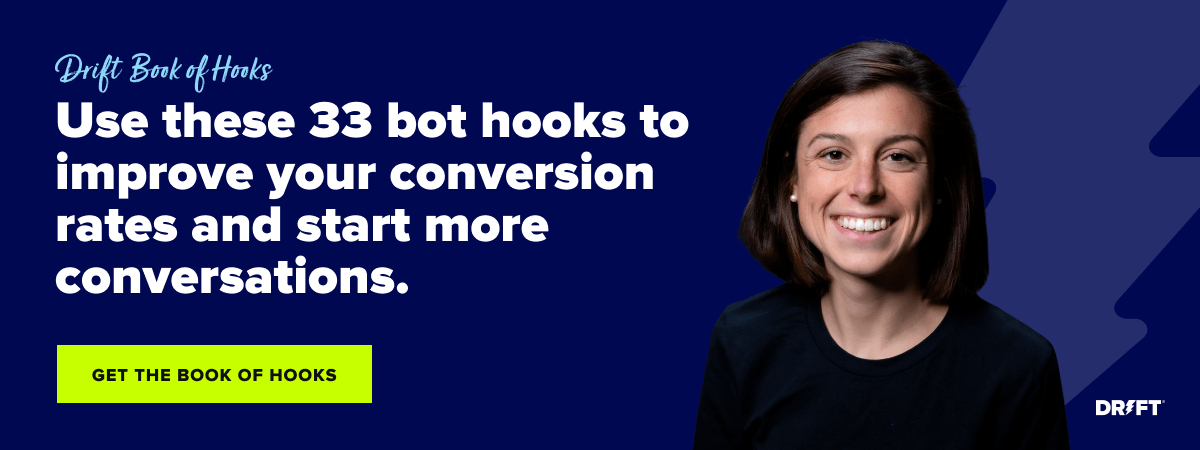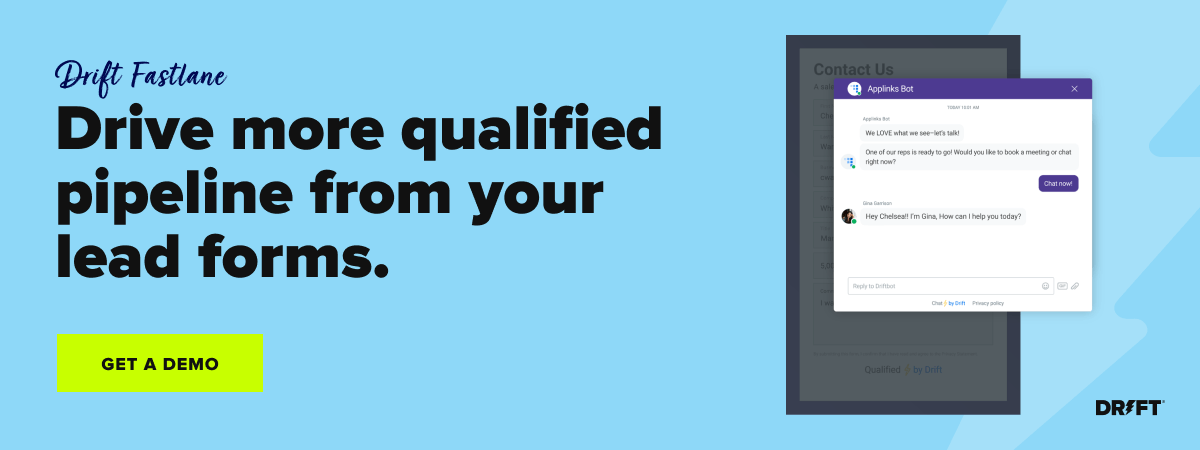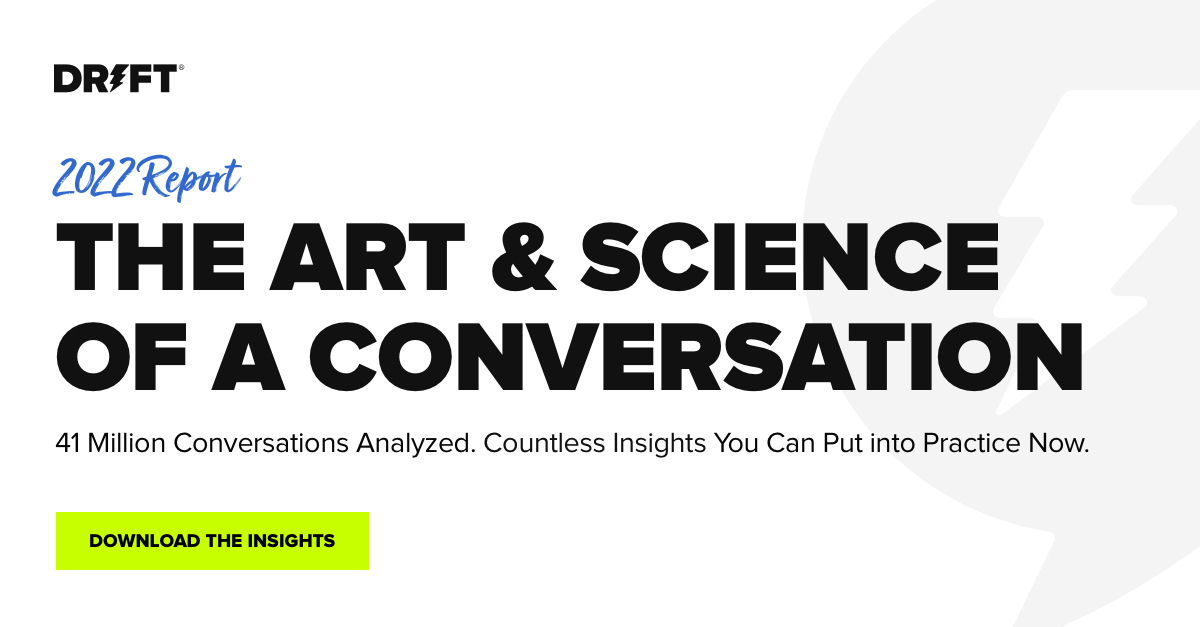At Drift, we’re proud to lead the #noforms mission.
But we also live by the motto, “Put the customer at the center of everything you do.” And realistically, forms continue to be an anchor for many marketing organizations.
The problem? Across multiple industries, B2B landing pages are converting at an average rate of 2.4%. Meanwhile, the top 10% convert at a rate of 11.5% or higher. That’s a huge gap, and companies are often at a loss on how to bridge it.
Hi there 👋 I’m Chris, a Customer Success Manager at Drift (and a previous marketing manager who was on the other side of this problem). For many of the customers I work with, form conversion is a glaring problem area. And I don’t just mean low submission rates. Forms are not yielding qualified prospects who actually follow through on their interest.
To successfully drive up conversion rates, you need to think beyond the traditional, static form. Here’s how Drift can help ⚡️
How to Begin Your Form-Fixing Process
Before you dive into any solution, the first step is to figure out where your forms are failing to convert. To do this, take a look at the form conversion funnel.
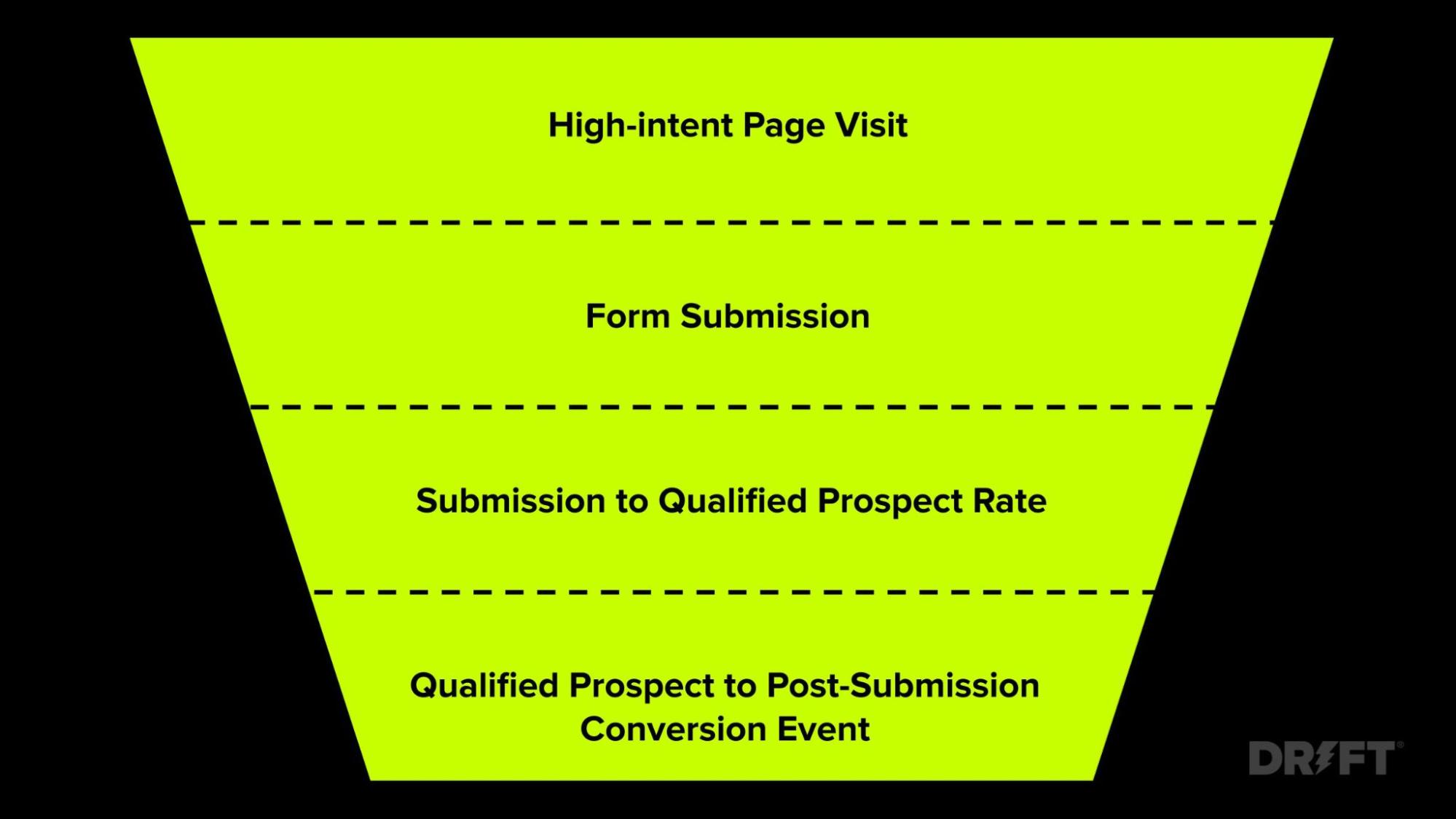
The form conversion funnel maps the site visitor’s progress from page visit to post-submission conversion event. It’s important to identify where in this funnel you’re seeing the most drop-off while keeping in mind where you have the most financial impact. That’s how you will know where to prioritize your time and resources for a solution.
A good rule of thumb is to work backward. For example, if you’re seeing low submission rates, you should also look into your submission to qualification rate. The logic here is that you want to prioritize getting qualified leads over increasing the number of overall leads.
Ultimately, you want to focus on the areas of the funnel that are closest to realistic and attainable revenue. Below, I’ll dive into the specific problem areas within the funnel and, for each, suggest actionable solutions that you can invest in today 👇
Problem #1: Your Site Visitors Aren’t Submitting Forms
Not all of your site visitors will fill out a form — that’s just today’s reality. According to LinkedIn, 81% of tech buyers choose not to complete a form when they encounter gated content.
Maybe your site visitors don’t want to volunteer their information. Or your form is too long. The bottom line is unless you provide alternative engagement options, you’re setting yourself up to lose a lot of buyers who are otherwise ready to talk to you.
Solution: Use Chatbots to Engage Buyers in Real Time
Don’t wait around for site visitors to fill out your forms. Instead, draw them into a real-time conversation with you using chatbots.
Here, the Skip the Form playbook comes in handy. By surfacing this playbook on the “contact us” page, high-intent buyers can get in touch with sales without needing to fill out a single form field. Here’s an example from Brandwatch:
Of course, not all of your site visitors will be jumping straight onto your “contact us” page. By placing chatbots across your website, you ensure that, even if the visitor isn’t ready to talk to sales, they still have a channel to ask questions and find resources. Then, when it’s time for them to buy, your chat experience will help you stand out against your competitors.
For a truly memorable experience, make sure your chatbots are engaging, personalized, and relevant out the gate. Tailor your playbooks to specific pages and tweak your copy to add a personal touch for your VIP buyers. We’ll explore more of the latter in the next section.
A great conversation starts with a great hook. Check out our ultimate book of hooks for inspiration.
Problem #2: Your Forms Aren’t Catching Qualified Buyers
Spam, unqualified, and not ready to buy — these are the three kinds of site visitors who haunt your lead database.
Hopefully, all companies are dedicated to engaging more qualified prospects. There are a lot of actions you can take, like targeting qualified audiences with paid ads. To simplify, I’ll be focusing on actions you can take when the prospect is already on the “contact us” page. But remember, your top-of-the-funnel efforts will also have a positive impact further down the funnel.
Solution: Roll Out the Red Carpet with Drift Intel
When a buyer that fits your ideal customer profile (ICP) visits your website, don’t you want them to chat with sales right away?
Think back to how brick and mortar stores did this long ago…you know, before Amazon. These stores leveraged signs, graphics, and other materials which spoke to their target customers. And when an ideal customer walked in, sales associates would rush to welcome them.
You can do the same on your website using Drift Intel. Intel gives you the power to identify qualified buyers without the form and tailor the buying experience specifically to them. This includes personalized messaging and instantly routing buyers to the right account reps.
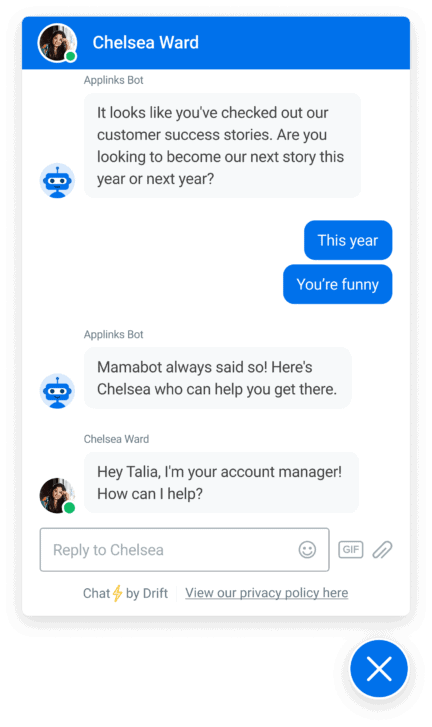
Having an on-site experience that automatically recognizes qualified buyers means your sales team can simply sit back and wait for a notification saying that an ideal customer is online. That way, your sales team can save buyers the hassle of filling out a form while dedicating their time to the prospects that count.
Solution: Adopt an Account-Based Marketing Approach
According to Gartner, only 5% of a buyer’s total purchase time is spent with a sales rep. From this, we can infer that today’s buyer is much less likely to visit your “contact us” or “request a demo page” from the start.
Although this article is focused on forms, I am driven by conversion (and I hope you are too) — so I have to share that my most successful customers are increasing their qualification rate by pairing Drift with an account-based marketing (ABM) approach.
With ABM, you actively pursue target accounts. Instead of rooting through your forms for leads, ABM involves identifying those companies that are the best fit for your product and engaging them with hyper-personalized messaging. Effectively, it’s the form conversion funnel turned upside down.
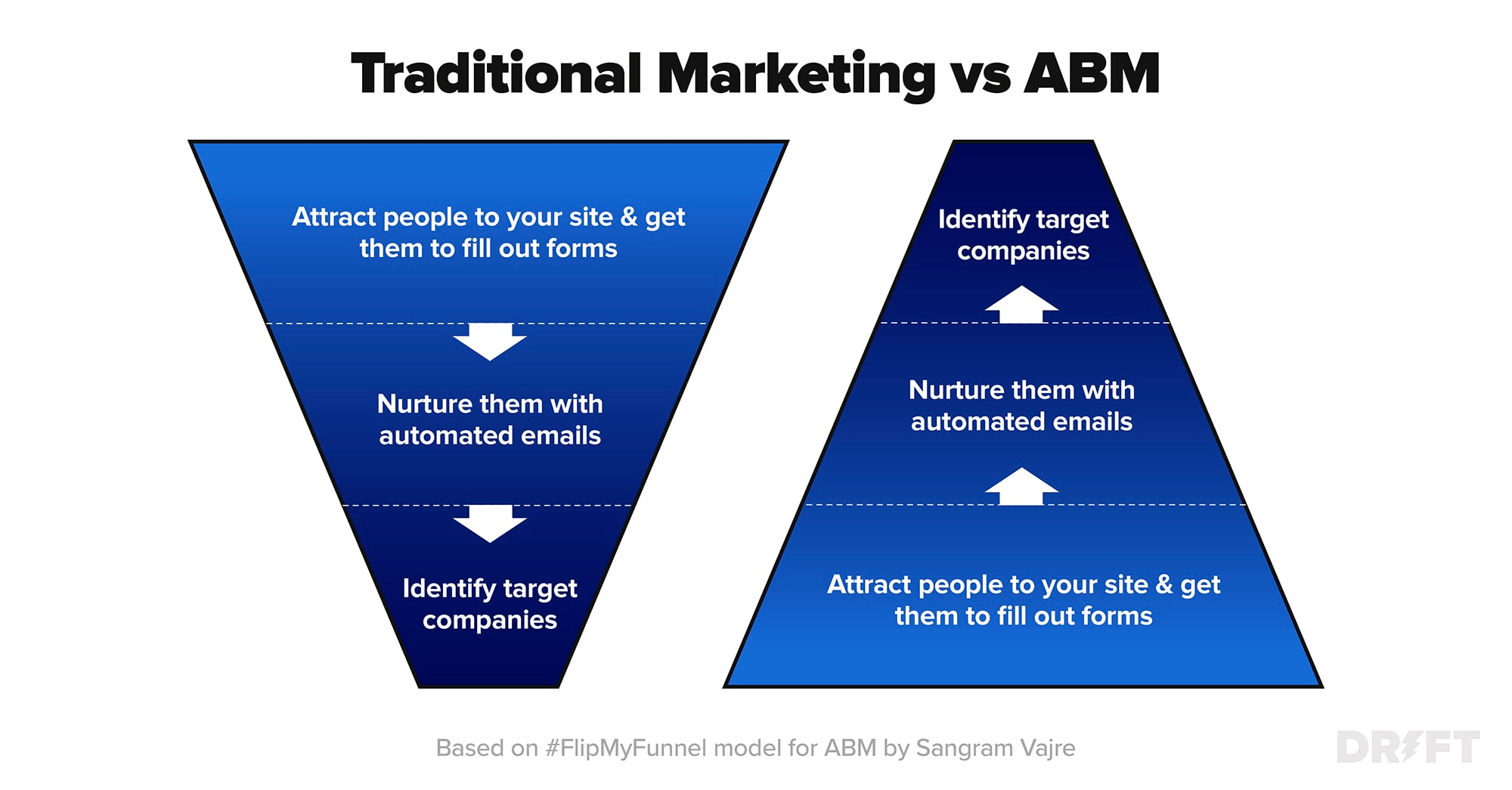
Once you’ve identified your ABM accounts, send them personalized messages through email or video and make sure they have a fast track to sales when they’re on your website. Here’s an example of a Target Account bot from BitSight.
Want to know what goes into a best-in-class ABM strategy? Read The Art of ABM: A Strategic Guide to Account-Based Marketing.
Problem #3: Your Buyers Drop Off After Form Submission
In the era of Amazon, B2B buyers are in search of the companies with the fastest deal cycles. In fact, a Harvard Business School study found that the likeliness of conversion decreases by 10x just five minutes after form completion.
Unless you’d like your sales team to spend all day refreshing their inbox, it’s time to invest in a solution that can identify a qualified buyer in real time and engage them right after they submit the form.
Solution: Net More Qualified Buyers from Lead Forms with Fastlane
All of this is possible with Drift Fastlane. Fastlane is a tool that sits on top of your lead forms and instantly identifies qualified buyers. You can do this by setting up targeting conditions based on form fields, pulling buyer insights from Drift Intel, and using information from third-party integrations.
As soon as Fastlane recognizes that the buyer is qualified, it gives buyers the ability to chat live or book a future meeting with their assigned sales rep.
At this stage, immediate on-site engagement is truly the best solution.
Throughout my time in marketing, we’ve tested automatic follow-up emails and other ways to provide buyers some real-time gratification for their submission. However, it all boils down to the fact that once the buyer leaves the website, their interest incrementally decreases. And nobody likes unscheduled follow-up calls from sales reps, days to weeks after form submission.
Test Your Forms for Better Conversions
Now that you have a few solutions in hand, what can you do to find out if your solution is working?
At the start of the form-fixing process, measure your baseline conversion rates. Make sure you can pull reports on these metrics and that whoever you report to has agreed on the metrics you are using. Here are the big ones to look out for:
- Form submission rate: This tells you how frequently site visitors are completing your forms. It also informs the number of visitors you need to drive to your site to hit a goal.
- Submission to post-submission conversion rate: This is the number of form submissions that go on to hit the next milestone in your buying process, such as booking a meeting with sales.
- Qualification rate: This is how many form submissions are determined qualified. This varies between companies — commonly, this is the number of form submissions that become either a marketing qualified lead (MQL) or sales accepted lead (SAL).
- Form completion rate: This looks into the number of people who submitted the form out of those who started the form. This shows if your form is too complex for the average site visitor to go through with.
Then, identify which solutions address your biggest pain points and implement them on your website. You’ll want to run the solution for two to four weeks depending on how much traffic and how many form submissions you see week-over-week.
Don’t put too many cooks in the kitchen, though. Test one thing at a time so you can accurately measure the impact of that specific solution and see what works best with your forms.
Pro tip💡 Our customer team has worked with hundreds of businesses to help them level up their sales and marketing. We’re ready to help you supercharge your Drift performance with our expertise and best practices — and see better results, faster. Chat with us here.
Final Thought
B2B buyers have long been used to static forms, long wait times, and generic responses. That isn’t going to cut it anymore.
But that doesn’t mean you have to scrap your forms altogether. You just have to figure out where your forms are falling short and invest in a solution that will address your buyers’ expectations.
Hopefully, with the problems and solutions I’ve discussed, you are much better equipped to fix your forms and drive conversion rates up 📈





